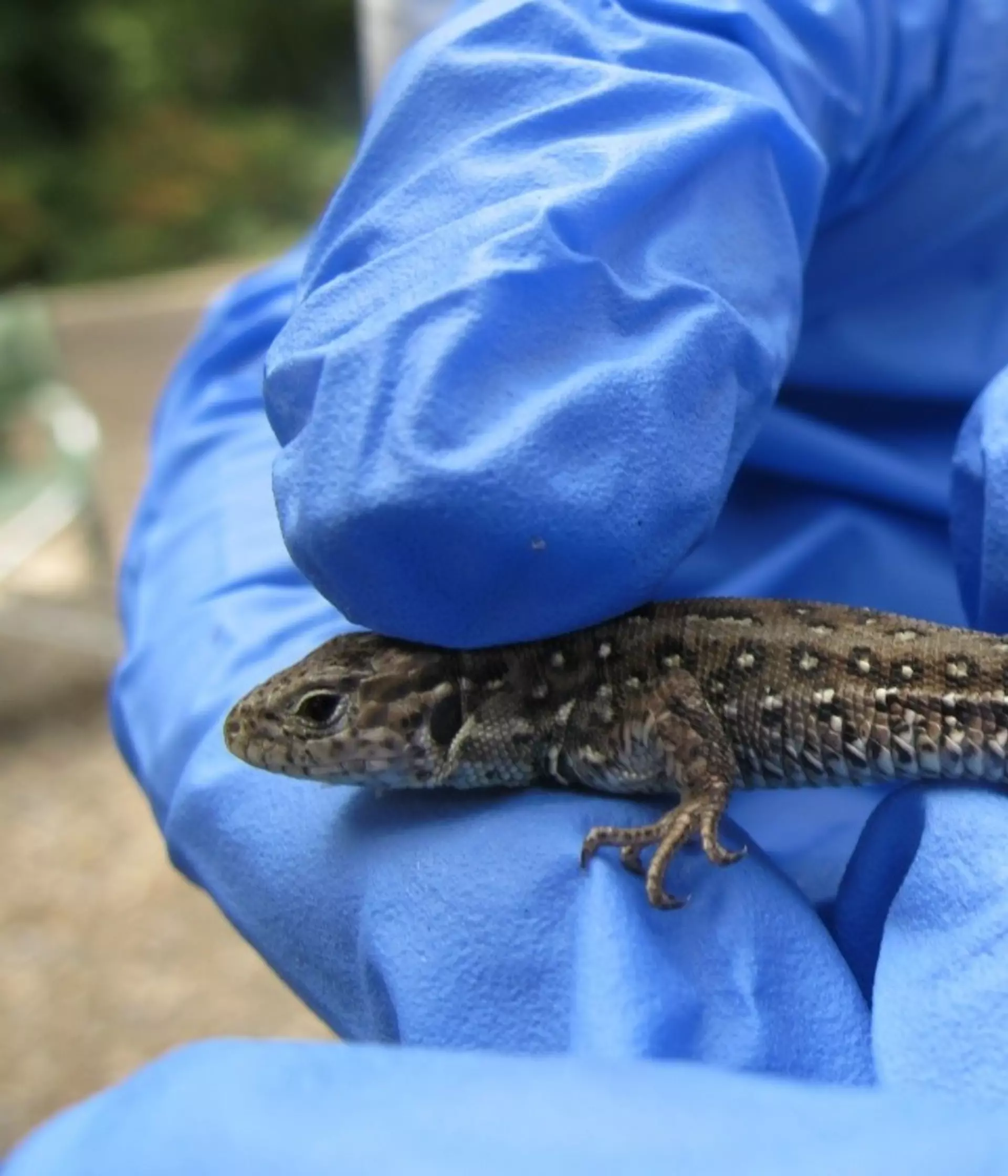
Georgina Gerard
DRAHS Project Manager
The sand lizard (Lacerta agilis agilis) has disappeared over much of its former range in the UK. Habitat loss and fragmentation are cited as the main factors in the species’ decline.
The sand lizard and its habitat are now protected under EU law (Bern Convention) and British law (Wildlife and Countryside Act 1981 and the Conservation of Habitats and Species Regulations 2010). A major component of the Species Recovery Programme for the sand lizard has been the reintroduction of sand lizards into their former range, using captive-bred animals. Releases have been taking place since 1969. This work has involved the British Herpetological Society (BHS), Natural England (NE) and the Amphibian and Reptile Conservation Trust (ARC).
DRAHS has contributed through a disease risk analysis (DRA) to assess the risk from disease in sand lizard translocations and a disease risk management (DRM) protocol. DRAHS continues to undertake pre-release health assessments on animals intended for release into the wild and post-release health surveillance (PRHS) by undertaking post-mortem examinations on sand lizards found dead.

The assessment
In September 2020 the DRAHS team travelled to Lancashire and to Dorset to carry out health examinations on cohorts of juvenile sand lizards reared for release. Full personal and protective equipment was worn by both vets and biologists to ensure there was no transfer of infectious agents between personnel and the lizards. Careful handling of the lizards was necessary in order to minimise stress and to avoid tail autotomy. Photographs were taken of each animal to aid individual identification. Assessment involved examination of the eyes, ears, oral cavity and skin for lesions. A body weight measurement was taken and an overall assessment of body condition was made. A doppler ultrasound probe was used to assess the cardiovascular system including the hear. The lungs were auscultated (listened to) through a stethoscope and a respiratory rate was calculated. Gentle coelomic palpation was carried out to ensure there were no masses. Faeces were collected both from individual lizards and from groups for parasitology testing, specifically for the protozoa Entamoeba spp and for Strongyloides spp helminths both of which can cause gastrointestinal disease in lizards.
In Lancashire, 41 sand lizards were examined and in Dorset a sample of 25 sand lizards from a total cohort of 50 were assessed. Observations included seven individuals which were shedding skin normally and one individual with a pinpoint oral lesion which was swabbed and found to be free of pathogenic bacteria. Two animals were found to have truncated tails without inflammation or infection - likely as a result of altercations between dominant individuals. One lizard from each cohort was retained for further close monitoring for 72 hours to ensure feeding behaviour and activity levels were normal.
All sand lizards were eventually deemed fit for release and successfully translocated to the wild!
